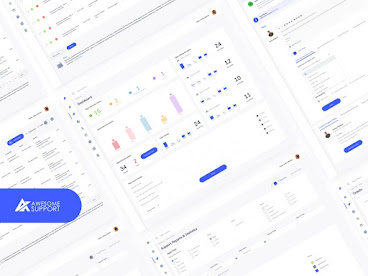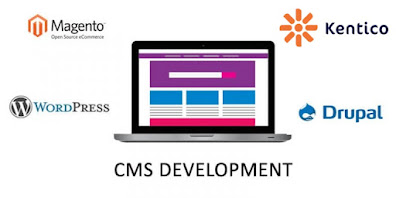- Get link
- X
- Other Apps
- Get link
- X
- Other Apps
One of the most common inquiries we listen to from our consumers is “how much does it cost to build a web application?”. We will reveal to you accurately what elements go into web application development payments charged by software companies for their assistance.
We understand absolutely fine why most of our buyers would prefer to get the cost for their project right away. It would be very helpful to know the accurate amount of capital needed to take your great idea to success and perform all the highlights you have envisioned. This would provide a fitter plan and manage funds.
Unfortunately, a batch of consumers doesn’t have complete insight into how to develop a web app. Most of the time a web application development company won’t be capable of providing you an accurate valuation right away. This is because web application development is a multi-stage method that needs a lot of time and energy.
Every project is a novel undertaking that needs varied approaches, tools, and team compositions. Thus, a batch of variables goes into the web app development cost so contact here.
 |
| how much to charge for web application development |
The greatest we can do is to analyze the chief factors that define the charge to create a web app. We’ll also provide you an idea of how to spend less without losing the quality of a product.
By the end of this article, you’ll know more than most when it reaches to estimating web app development cost.
Here is What the Development Process is
If you desire to develop a web application, it’s a great idea to take a move back and figure out what a development process consists of and why you should spend time on every action.
Despite the applied methodology, web development is a highly labor-intensive process. Each of its steps needs the hard work of numerous qualified professionals.
As a part of a go-to-market strategy, the development normally has five steps: demands gathering/analysis, prototyping and design, development, testing, and launch to market.
1. Requirements gathering/analysis
This is the step at which a business analysis department manages numerous interviews with the consumer. They ask a bunch of inquiries about the consumer vision, wanted features, goals, etc. During the complete course of a project business analysts act as mediators between stakeholders and the development team. At this step a prototype is created, wireframes are developed, use cases and user stories are composed, functional and scope documentation is made.
Resources required: A product/project manager.
 |
| web application design |
Image Source: Envato
2. Design
This is the stage where the magic appears and designers reach up with the look and feel of the application. This phrase covers the design of user interface, experience, and multiple visual components. The designers attempt to execute interacting with the application a comfortable and unforgettable experience, as well as to create the application exhibit the soul and spirit of your brand.
Resources required: 1 UI/UX designer.
3. Development
This is the most simple action in making an application to life which regularly covers the development of the front-end and back-end of the application. The crew can continue to the coding itself. Unit tests are driven to assure that every least testable portion of code (called unit) operates accurately.
Resources required: 1-3 web developers.
4. Testing
This is when Quality Assurance engineers complete working, UI/UX, and another testing. In addition to manual tests, the QA department can drive automated tests. This alternative costs extra bucks but is required for large projects. The ultimate point of this step is User Acceptance Testing (UAT) played by the exact intended users of the application.
Resources required: at least 1 QA engineer.
 |
| launch and maintenance |
5. Launch and maintenance
The ultimate step at which the product is lastly launched. Load examination is finished to view how the application runs under common and top load situations. The crew prepares the domain and server and executes the last trial of the system before its discharge. After the application has opened the market you can begin the method all over repeatedly to continue development OR drive to the backer stage.
Resources required: all the team.
As you can observe the development team consists of at least 4 extremely skilled specialists working full-time to produce your idea to life. Moreover, every stage demands the acceptance of several tools and resources.
Recognize that the charge to produce an application to market goes ahead with a simplistic MVP budget. The charges are much more than the beginning, UX, design, development, or project management dollars. There will be the smallest budget needed for continuous updates and few server expenses.
What Factors Influence the Costs of Development?
Let’s take attention to the main parts that influence web application development cost:
- The scope of work.
- Business niche.
- The technical complexity of the project’s features.
- UI/UX design.
- Deadlines.
- Non-functional requirements.
- Development company.
- Engagement model.
Now let’s review all of these parts individually and see how they may improve or reduce the costs of web development.
 |
| Scope of work |
Scope of work
Scope of work may be defined as a set of points that the web application is needed to have or the amount of work needed to produce them.
If you’ll attempt to execute all the useful traits at once you’ll continue the development process and improve the primary costs.
Оn the contrary, if you concentrate on the smallest set of most important points and execute further features through future updates, the upfront price will be dramatically decreased. Nerds call this philosophy the ‘MVP approach’.
The programmers would require to only code the primary features, the QA engineers will, in change, have much fewer code to test, and so on. Easily put, all additional features need further time from experts who get their wages on an hourly basis.
Thus, an MVP approach is a transparent winner in this section. Of course, in the lengthy run, the expense of your project development will improve after each discharge. But the digital world is in continual flux and the fittest choices are made based on acumen, so you will at the smallest pay only for the points that your business and your users require at the moment.
Takeaway: Executing all the highlights at once raises the cost of development and pauses the discharge of your web application; utilizing the MVP approach assists to decrease the expenses and dodges the prospect to spend on useless features.
 |
| business niche |
Image Source: Alltopstartups
Business niche
A broad business domain indicates that there is an abundance of people available who can transform your concept into existence. A tremendous pool of potential contractors indicates that the value has to be retained in check because of healthy conflict.
Nowadays each man and his dog can, for instance, develop an online shop. We’ve previously described the process before. The difficulty that can awake from such a position is a lot of inexperienced developers disappearing among the expert and reliable businesses.
If your niche is notably small, prepare to open your purse wide. It can be very hard to discover the developers who understand their onions in such a situation. A company employed to develop a highly distinct application might require hiring an expert in a given area. They might have to arrange further training for the crew. All of this increases the development and raises its price.
Takeaway: A small business niche indicates higher costs of development; a broad business domain indicated lower costs.
The technical complexity of the project’s features
Some of the specialties are a usual fare for a website development company. They are common and don’t need any unusual actions to complete them. That’s why the developers don’t charge that much for such features.
Other features, such as third-party integrations, can be fairly complex to execute. Integrations are normally done by means of Application Programming Interfaces – or API for small. In our case, a smooth online shop may be needed to integrate a shopping cart, a shipment module, a checkout, a payment gateway, social media, and much more.
But why is API integration considered such a difficult task?
Initially, the developers have to communicate with the interfaces produced by the third parties. Pretty usually the programmers have no previous experience if the integration is of a non-standard manner. The third-party technologies may have adaptability difficulties with the in-house tech. The providers can make modifications to their APIs. Sometimes this may disclose your application continuously the programmers settle the conflicts.
That’s why the development team has to completely investigate the API they require to integrate. Also, the third-party integration needs a bunch of extra trials required to determine how the application interacts with the API. All of this, of course, takes a lot.
Takeaway: Implementation of technically difficult features raises the costs of development; regular features are not so costly.
 |
| ui-ux design services |
UI/UX Design
If you require a completely custom design be able to fork out pretty money. Not only expert designer(s) will have to slave continuously 24/7 to come up with a design that is: a) distinct from each other company on the Internet; b) displays the identity and knowledge of your brand.
HTML/CSS coders would also have to develop a custom markup for the app. Notable impacts and breathtaking animations, company logos, etc. all take further time and fetch more money.
The more affordable option is a regular design consisting of pre-built templates and themes. The charges of design also depend on projects for the future. For instance, if you think to launch a mobile app in addition to a web application this request should be brought into account when creating the parent application.
Some special demands of a client (i.e. assistance of older browser versions) can require extra money.
Takeaway: Custom design enhances the costs of development; design based on being templates and themes supports to decrease charges.
 |
| project deadlines |
Image Source: workfront
Deadlines
The costs of development are hugely influenced by the time boundaries required by the dev team. A rush job practically regularly indicates costlier charges. This is because to reach the fixed deadlines more resources have to be dedicated to the development process. A compact schedule also occurs with bigger risks and raised demand ineffective management.
At some spot easily joining another developer to the team allows no notable rise in productivity. This is because it is difficult to split complicated jobs into shorter, more controllable subtasks.
As the demand for internal discussion grows so do the discussions and the resulting team becomes much tougher to maintain.
Sometimes it’s more efficient to support the team to work overtime than to easily add developers. This, of course, suggests that the customer has to remunerate that additional workload so that the overburdened sleep-deprived developers don’t arrange a riot.
Takeaway: Tight deadlines make the costs of development go up; lax time boundaries assist to decrease down the expenses.
Non-functional requirements
Each software good has a set of functional requirements, i.e. a list of objects the application should be able of doing. All the other demands can be classified into a section of non-functional requirements.
This section consists of several characteristics that explain how the application works. The cases may incorporate scalability, security, usability, reliability, execution, etc. Their usefulness lies in that they change the experience that users have while associating with the system.
One of the most significant non-functional requirements is the system’s ability or the number of calls it can manage per unit of time. High-load systems eternally fetch more capital to develop for various causes.
Initial of all, their architecture changes from that of regular applications. If the system is assumed to be utilized by millions of people every day it should be more reliable, secure, and have virtually no downtime.
Developing a high-load system may need drawing in further professionals who have experience in building such products. Also, the server tools required to run a high-load application is far more costly than the machines applied for common web applications.
Takeaway: High-load systems cost a tonne of capital; normal ones – not so many.
Choice of developer
The choice of business you entrust to create your web app is one of the most essential variables that impact the costs of development. The more the business pays its representatives the more it charges its customers.
Hourly rates for web app developers depend on three essential portions:
- Geographical location.
- Experience.
- Company’s size, expertise, and reputation.
The visible location of the developers decides how much they are paid. The experts living in nations with a costlier expense of existence manage to have more expensive wages.
 |
| software developer working hourly rates by country |
Developers in the USA, Canada, the UK, and Australia can be selected to make a web app for $80-250/hour.
Eastern Europe, Middle East, and South America become second with $30-110 per hour. The more economical alternative is to engage developers from Ukraine for $20-50 or India for $10-80 per hour.
It’s no mystery that freelance developers have cheaper rates than their equivalents employed at the largest agencies in the field. Experienced developers tend to charge more for their assistance than the newcomers. The assistance of well-known organizations can get a lot due to brand recall. Thus, you have to watch for delicate stability between your accounts and the fame of the people you choose.
Some software titans won’t even discuss your project if your funds don’t reach near $500,000 or more. Efrog, on another hand, can undertake projects of nearly any extent. The main benefit of Efrog is that we have our development department located in most of around the world like Ukraine, India, Australia, the UK or The USA also Eastern Europe, Middle East, a home for some of the numerous skilled people in the industry. The nation also possesses one of the biggest communities of developers in Europe while holding reasonable hourly rates.
Takeaway: Large businesses in prime world nations debit more than tinier developers and businesses in nations with a cheaper standard of existence.
Main Web App Categorizations
Web apps are classified into six wide levels:
Static Web Application | Dynamic Web Application | E-commerce Web Application Development | Web Portal Development | CMS Web Application Development Services |
$500 - $10,000 | $2500 - $5000 | $10,000 - $50,000 | $3,000 - $6,000 | $5,000 - $50,000 |
1. Static Web Application
A static website is simply and soon generated in HTML and CSS languages. They are cost-effective but are better to showcase collections or latent messages. As, even if you desire to update specific information on the website, you require a developer to complete the needful duty. The main benefits of developing a static website are modest hosting, simple indexing, and soon conveyed from server to customer without much processing time.
 |
| dynamic web application |
Image Source: Unsplash
2. Dynamic Web Application
Dynamic websites are more robust than static websites. From the peace of sustenance to higher usability, dynamic web apps provide you a chance to showcase various content to various users according to the location. It is developed with a blend of HTML and coding. Unlike static websites, it takes a whole database of content thus you can effortlessly modify, edit, or update content, without the necessity of a web developer. By allowing its specialties like newly observed items, personalized product recommendations, and location-based proposals, you can achieve an amazing customer experience. It improves customer engagement and gains retention.
3. E-commerce Web Application Development
Every E-commerce web app is unusual from another. Association of various features like content management system, payment gateways, search engine optimized layout, reporting tools, email integration, push notifications, chatbots, and much more can influence the entire development cost. With the appropriate features on your e-store website, you can arrive at a global audience with comfort.
 |
| web portal development |
4. Web Portal Development
There are numerous web portals including B2C, B2B, learning, community, vendor, and much more. Every portal can be separated from others in its features. For information management, you can utilize features like multi-site maintenance, document management, and advanced exploration. To create a platform socially-active, you can integrate media galleries, polls & rating functionality, and activity streams. If you desire to improve collaboration then you can incorporate workflows, forums, and blogs.
5. Animation web development
With the continuously evolving technology ecosystem, you require to provide something “more” to maintain your customers engaged. The most suitable answer for animation can be achieved by using HTML5, CSS3, and JavaScript. While animation web development, you require to think of cross-platform assistance. Devices reach with various aspect ratios, adjustments, and pixel quantities, thus you require to examine all platforms and devices to more reliable appearance and enhanced answer times. The development can cost nearly $10,000 per minute for a simplistic video with no characters.
 |
| cms web application development services |
6. CMS Web Application Development Services
For immediate management of website content, you can utilize the appropriate CMS for your business. It provides the entire control over your website including design and content. You can alter, delete, add, or update web pages when and where needed, without letting a web developer. However, the cost depends on which CMS you utilize for your business. With developing trends, there are various CMS choices that you can apply and enhance your company’s website, effortlessly.
- 6.1 Kentico
Kentico is a licensed CMS that allows you to run online stores and gives a consolidated appearance of your marketing activities and consumer data. It is an all-in-one answer with out-of-the-box functionality thus a superior choice for the enterprise-grade website. The usual cost with a custom design for a corporate website begins from $50,000.
- 6.2 WordPress
WordPress is an open-source yet robust CMS that offers great features to make intuitive business websites. It is a decent web development solution for expert websites and e-commerce stores. The platform allows smart customization, responsive design, easy-to-install functionality, versatile theme alternatives, flexibility, and much more. A custom WordPress theme will cost nearly $3000 and a custom WordPress website will cost approximately $15,000.
- 6.3 Drupal
One of the most extensive CMS systems available in the market is Drupal. You can utilize the platform to handle content as per your altering business strategies with peace. If done right, you can create websites highly responsive, safe, and smooth to integrate & market. A standard Drupal project can price you approximately $30,000 to $40,000. However, the charge may increase in the case of complex workflows and various content types
- 6.4 Magento
An open-source platform, Magento is largely utilized for e-commerce development. It is a feature-rich CMS that empowers store owners to execute the effective usages of in-built features to maintain the overall store functionality. Some of the in-built features incorporate search engine optimization, catalog management, payment integration tools, and much more. The charge of a Magento website begins from $20,000 to $40,000.
Takeaway: The choice of website application development company has a significant influence on the development costs. Whether you prefer freelancers in an inexpensive area of an efrog company in a cheap location may cost you an arm and a leg. Pick a famous web development company with a proven-track experience to appreciate immense advantages in the future.
Engagement model
Software development company utilize a vast category of various engagement models. All of them have different benefits and drawbacks. This is yet another point that can considerably impact the ultimate costs of developing a custom web app.
Two of the most utilized engagement models are fixed price and non-fixed price models.
 |
| fixed price engagement model |
Image Source: Addonwebsolutions
Fixed-price
Under such an agreement, the budget, timescale, and amount of work are fixed in stone and stipulated by both parties beforehand. The cost is based on the survey performed by the development company before the origin of development. Fixed price deals need completeness of primary demands and strong authority over alterations.
The developers bound by a fixed price agreement carry everything the perils. The developers can’t beat the expected budget and deadlines so the perils are estimated beforehand and are involved in the ultimate price. On one hand, a fixed-price agreement offers a high degree of predictability. On the other hand, fixed price is the most costly and the light plastic type of deal.
Non-fixed price
This is an umbrella term for a number of engagement models. There is a vast abundance of its subtypes such as Cost Plus, Guesstimate, Time and Materials, Dedicated Development Center. Each of them has basic features.
Under a non-fixed-price agreement, the cost of development is not fixed in stone and can dynamically adjust during the development process. The jobber and the client typically distribute their risks.
Thus the developer doesn’t have to strain the clients for the perils so the prices go down.
"Our recommendation is to begin the MVP development under a fixed-price agreement and then proceed with the cooperation under a more flexible engagement model."
At the real origin, there can be a loss of mutual faith between the developer and the customer. It’s only natural to have a little attention towards people you know only by their ads on the Internet or the client’s statements.
Developing the MVP under a fixed price agreement provides you to restrict the reach of the project while being upfront with deadlines and the project’s expenses. You don’t have to carry any risks and you’re assured to get an effective solution within the deadlines. As mutual liability arises, it’s enough to take one of the more flexible engagement models. In such a way you’ll keep a bunch of money.
Takeaway: Fixed price agreement raises the costs of development; non-fixed price agreements support decreased down payments.
 |
| Conclusion |
Conclusion
Now, we assume, you have a great idea about the portions that impact how much it costs to build a web application and why the developers delay to provide you the solution right away.
To recap the most influential determinants: scope of work, business niche, the technical complexity of the project’s features, design and user interface, deadlines, non-functional requirements, choice of developer, and the chosen engagement model.
As you can view several factors and decisions can reduce or improve website application development cost. That’s why it is extremely essential that you review all the ins and outs of your ideal project with the development team.
Only mutually you can determine where it’s likely to decrease difficulties and where it’s enough to pay more so that you’ll get a product of the essential quality.
You also have to recognize that money used to develop a functioning app from a single piece of the budget. A vast part of the budget is continuing to be used on digital marketing, updates and added features, backend support, clients support, and other expenses. So preserve that in mind when letting a team of experts develop your project.
If you’d prefer to get further info or request an inquiry just message us or make a comment. Transforming big concepts into completely functional applications is a portion of our daily work. If you desire to recognize our rates do not wait to contact us and we’ll be happy to provide an evaluation for your application.
Comments
Post a Comment